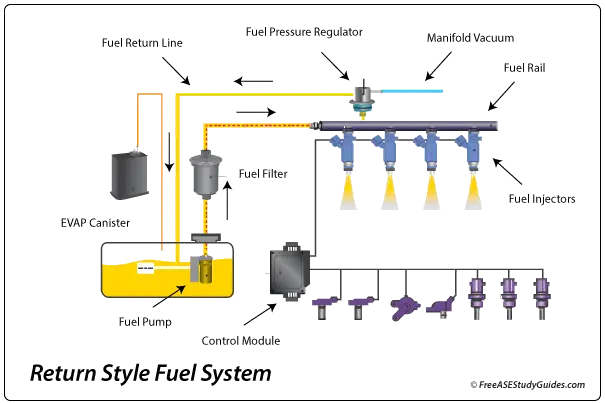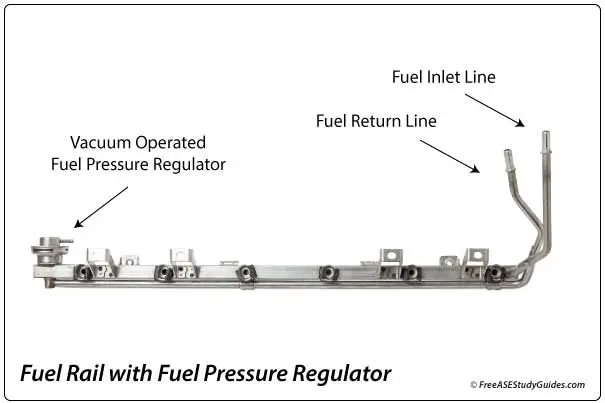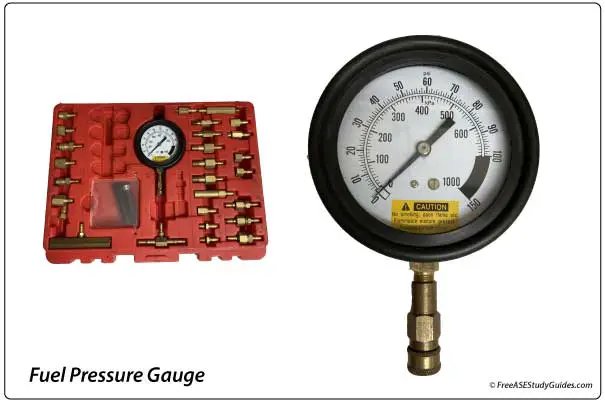Automotive Fuel Systems

Proper fuel pressure is vital for engine operation and performance. The air pressure in the intake manifold changes as conditions change. A standard engine will have a vacuum of 18 hg at idle and atmospheric pressure at wide-open throttle. Turbocharged and supercharged engines have positive boost pressure. Therefore, the fuel system must adapt.

The two fuel systems commonly found on today's engines are return and returnless fuel systems. A return-style fuel system has a vacuum-operated fuel pressure regulator and a return line. At idle and low engine speeds, the pressure regulator returns fuel to the tank resulting in excessive emissions.
Returnless Fuel Systems

Returnless systems have no return line eliminating the emissions problem by consuming the fuel in the fuel rail. Instead of mounting a vacuum-controlled fuel pressure regulator on the fuel rail, it's on the fuel pump housing in the tank.
The control module receives a signal from the fuel pressure sensor on the fuel rail and controls the pump pressure and flow. It varies the pulse width of the injectors and the fuel pump. The control module has different modes of operation capable of providing high fuel pressure while passing and cutting fuel off during high-speed deceleration.
Fuel Pressure Test

Check the service manual for specifications and use a fuel pressure gauge to check the fuel pressure. After installing a fuel gauge, secure it and turn the ignition key to the ON position; it should indicate fuel pressure. Next, start the engine; the fuel pressure should remain the same and increase with a throttle snap.
Fuel Pressure Regulator Test

Test a vacuum-operated fuel pressure regulator by removing the vacuum line while monitoring fuel pressure. The pressure should increase (5-15 psi.). Check with the manufacturer's manual for special procedures.
Returnless fuel pressure regulators are electric and controlled by a control module (ECM). Monitor the fuel pressure sensor signal with a scan tool and compare it to the fuel gauge; if there is a difference, suspect a faulty sensor.